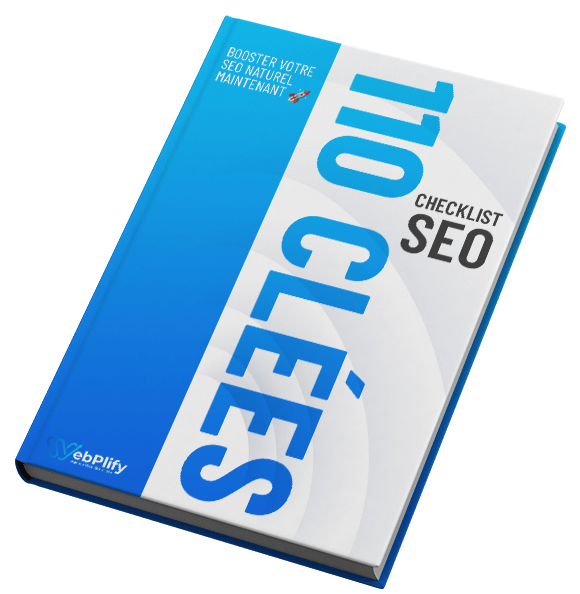Be the online hero | SEO audit
SEO audit Free and Instant
At WebPlify, your online presence is important to us. That’s why we let you carry out an SEO audit of your website free of charge with our website analyzer.
Enter your website url and e-mail address, then let our algorithm do the work for you.
What is a full SEO audit?
A full SEO audit is an in-depth analysis of a website’s search engine optimization (SEO) performance. The aim is to identify strengths, weaknesses and optimization opportunities to improve the site’s ranking in search results. An SEO audit enables targeted strategies to be put in place to increase visibility, attract qualified traffic and maximize conversions.
Why perform an SEO Audit?
1. Adapting to Google Algorithms
On average, Google makes several hundred changes to its algorithms every year. These changes influence ranking criteria and user expectations.
A regular SEO audit allows you to adjust your site to the latest trends and avoid a drop in ranking.
2. Improving the User Experience
Google’s algorithm takes user experience (UX) into consideration. A slow, poorly structured or non-mobile-friendly site can discourage visitors and negatively affect your SEO.
An SEO audit helps to identify and correct any problems that are detrimental to UX.
3. Identifying technical problems
Technical errors such as broken links, 404 errors or indexing problems can prevent Google from properly understanding and indexing your site.
An SEO audit will help you to identify these errors and ensure optimal indexing of all your important pages.
4. Conversion Optimization
Beyond traffic, the ultimate goal is to turn visitors into customers. By analyzing your site’s data, an SEO audit can show you where your visitors are giving up, so you can improve your pages and increase the conversion rate.
Which factors to analyze in a SEO audit ?
A full SEO audit takes into account several key elements to assess your site's health and SEO performance.
1. Technical analysis
- Loading speed : Loading speed is crucial for Google. Use tools like PageSpeed Insights to measure and optimize your page load times.
- Mobile compatibility: With Google’s mobile-first indexing, it’s essential that your site is responsive. A site not optimized for mobile risks being penalized in search results.
- URL structure: Simple, short, relevant URLs facilitate indexing by search engines.
- XML Sitemap and Robots.txt: A well-structured sitemap helps Google to understand the hierarchy of your pages, making them easier to index.
2. Keyword and content analysis
- Keyword relevance: Check that your pages are optimized for the keywords most relevant to your business. Use tools like Ahrefs or SEMrush to identify high-performing keywords and new keyword opportunities.
- Content quality: Google values relevant, original and useful content. Make sure your content meets your audience’s search intentions.
- Long-tail keywords: By targeting specific keywords, you can attract more qualified and less competitive traffic.
- Tag optimization: title tags, meta-descriptions and H1, H2 tags must be optimized with keywords while remaining natural for the user.
3. Analysis of backlinks and site authority
- Backlink quality: Quality backlinks boost your site’s authority. It’s important to get backlinks from credible, relevant sites. Beware of poor-quality links, which can penalize your site.
- Competitor analysis: Evaluating your competitors’ backlink profile can give you ideas for strategies to obtain quality links.
- Netlinking strategy: Implement a netlinking strategy to obtain backlinks from high-authority sites and improve your SEO.
4. User Experience (UX) and Interaction
- Time spent on site: If users leave your site quickly (high bounce rate), this may indicate a lack of relevance or a UX problem.
- Navigation and site map: Make sure that navigation is intuitive and that users can easily find the information they are looking for.
- Core Web Vitals analysis: These indicators measure your site’s visual stability, interactivity and loading time – criteria that have become essential for SEO.
What Google takes into consideration when determining SEO rankings
Google analyzes hundreds of criteria to determine the ranking of pages in search results. Here are the main elements Google takes into account:

Quality content: Google favors content that precisely answers users’ questions. The more relevant and useful the content, the more it will be valued.

Quality backlinks: Your site’s credibility depends largely on inbound links from trusted sites.

Technical performance: Core Web Vitals, mobile compatibility and loading time are all technical criteria that influence your SEO.

Search intent: Google seeks to understand the intent of each query and to offer the most relevant content, whether it’s a blog post, a video, or a product listing.

User engagement: Click-through rate, time spent on page and bounce rate are indicators of the level of engagement of your content, and are taken into account by Google to determine its relevance.




